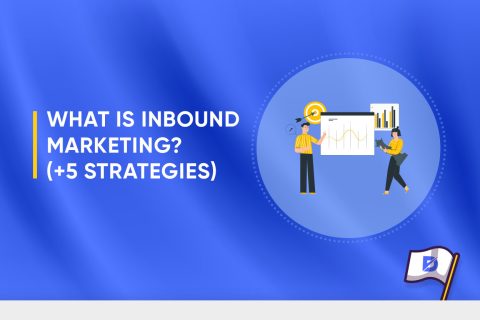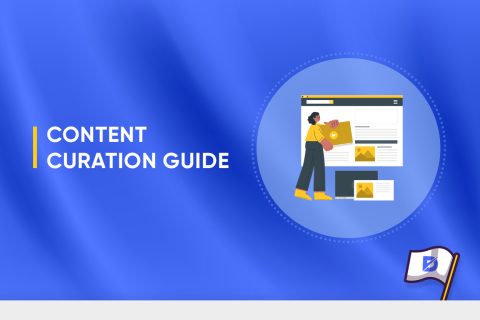Marketers have become seriously interested in geofencing. Because they aim to make location-based competitive studies with geofencing for their display ads. Geofencing is the next big step in digitalizing the marketing sector for ad impressions. With geofencing marketing ads, companies can define an audience based on a customer’s behavior in a specific location.
What is Geofencing Marketing?
Geofence marketing definition is the perimeter border of the real world in the virtual world. Fencing, geofence, or geofencing is a marketing technology that uses GPS, RFID, and WIFI technologies to send warnings such as advertisements and discounts to a device (especially mobile phones) as soon as it enters the region determined by authorized persons in advance. Location-based marketing, also known as geolocation marketing, is a marketing strategy that uses a customer’s geographical location to deliver personalized content, offers, and advertising. By utilizing GPS technology, businesses can deliver location-specific promotions, notifications, or recommendations to their target audience. Location-based marketing is particularly effective for brick-and-mortar businesses as it helps to attract customers who are already nearby.

How Does Geofencing Marketing Work?
Geofencing marketing works well for shops, restaurants, and places where events happen. It lets these businesses talk to possible customers right away, depending on how close the customers are to a certain spot. There are three main ways to set up geofences. The first method involves using a centroid radius. This means identifying the central point of a place, like a building or property, and then determining a specific distance (a radius) all around it. This creates a general area where ads are sent to people with mobile devices when they come close to that spot.
The second approach is through walk or drive time, also known as an isochrone. This method calculates the time it takes to travel from one place to another using different transportation methods. Companies can then send ads specifically to people who can reach their business within a set amount of time. This is a more detailed geofencing method that focuses on marketing to people who can easily reach a business, not just those who are nearby. Some nearby people might still find it challenging to get to a business due to obstacles or a lack of transportation.
The third technique involves building footprints. This method utilizes measured shapes to depict the precise physical boundaries of a place of interest, whether it’s a whole building, a park, or a store in a mall. Subsequently, a business can send notifications exclusively to people who step inside the building or on the property. This precisely targets individuals who, by visiting a business, indicate a potential interest in making a purchase.
5 Benefits Of Using Geofencing
Geofencing offers several benefits for businesses looking to enhance their marketing strategies and engage with customers more effectively. Geofencing marketing gives businesses a strong way to send personalized messages to possible customers in certain spots. This not only makes marketing more effective but also adds to a more personal and enjoyable experience for customers.
The benefits of using geofencing are listed below:
1. Targeted Advertising
Geofencing allows businesses to deliver highly targeted advertisements to users within a specific geographic area. This ensures that marketing messages reach people who are physically close to the business, increasing the relevance of the content. Furthermore, by sending personalized messages and tempting offers, businesses can attract nearby customers to visit their place. Imagine a restaurant sending a message to someone dining at a nearby competitor, giving them a special discount or a free appetizer to check out their spot. This focused strategy lets businesses connect directly with potential customers at the perfect moment, making it more likely to win them over and draw them away from the competition.
2. Increased Relevance and Personalization
By sending location-based notifications, businesses can tailor their messages to suit the immediate needs and interests of potential customers. Geofencing ads is a cool marketing tool that lets businesses send special messages and deals based on where you are. It works using your phone’s location features like GPS. So, if you’re near a store, they can send you personalized offers or tell you about exclusive discounts. This way, you get information that’s just right for where you are.

3. Improved Customer Engagement
Geofencing enables businesses to engage with customers in real time, offering timely promotions, discounts, or information when they are most likely to act on it. This can lead to increased foot traffic, conversions, and overall customer satisfaction. By sending special and personal deals at just the right time, businesses can connect with their specific audience in a super-targeted way. This makes it more likely for them to grab the attention of nearby customers and turn them into happy customers.
4. Competitive Advantage
Utilizing geofencing technology gives businesses a competitive edge by reaching consumers precisely where they are, at the right moment. This can be particularly advantageous in highly competitive markets, helping a business stand out from its competitors. Geofencing marketing is a smart move for businesses aiming to outshine their competition. By placing digital borders around rival spots, businesses can target nearby customers with personalized messages. For instance, a coffee shop can offer a special deal to someone at a neighboring café. This tactic lets businesses grab attention at the right place and time, increasing the chances of winning customers over and luring them away from the competition. Geofencing is like a strategic superhero move, helping businesses gain an edge in the market.
5. Economic
Geofence marketing is a smart and budget-friendly way to promote products. Unlike big ads that cover a large area and cost a lot, geofencing marketing lets you focus on specific places. You only pay for ads in those exact spots. Plus, if you do it right, your ads can reach lots of people in those places who are more likely to buy from you. This way, you spend less and reach more potential customers.

How to Use Geofencing Marketing for Your Business?
Using location-based ads can be great for getting people to visit your online or physical stores. But, geofencing marketing, which is a bit pricier than regular online ads, can also be very useful. By keeping an eye on these metrics, you can adjust your ads based on how well they’re working. If people aren’t responding, you can change your messages or promos.
Pick the Right Geofence Size
A bigger geofence costs more, but in this case, bigger might not be better. Instead of a large area, consider making several smaller ones. Aim for a distance that people can walk in about five minutes from your store.
Know Your Customers
Understand who your customers are—how old they are, what they like, and how they shop. This helps you target your ads better. Knowing why they like your business and what drew them in helps you create ads they’ll respond to.
Make Your Ads Actionable
Instead of just talking about what you sell, focus on in-store promotions or offer rewards for responding to the ad. Give people a reason to visit. For example, KFC sends personalized notifications mentioning the customer’s name and offering a promo on their favorite drink.

Use a Compelling CTA (Call to Action)
Finish off your ad with a compelling call to action. Reveal Mobile found that successful CTAs for geotargeted ads include “learn more,” “shop now,” “buy now,” “click here,” and variations like “order now” or “click to save.”
Try Different Targeting Options
Geotargeted ads come with different ways to reach your audience:
- Dayparting: Target users at specific times of the day.
- Behavioral targeting: Show ads based on user behaviors.
- Context targeting: Display ads based on visited websites.
- Retargeting: Send ads to previous online visitors and former customers.
Track Your Success
Keep an eye on key metrics to see if your campaigns are working. Some metrics to consider are ad impressions, click-through rate, cost per 1000 impressions, cost per click, conversion zone visits, cost per visit, cost per action (phone call, walk-in, sale), and walk-in rate.

Geofencing Vs Geotargeting Vs Geolocation
Geofencing, geotargeting, and geolocation are related concepts in location-based marketing, but they have distinct differences. Let’s the terms with detailed explanations below:
Geofencing marketing involves creating virtual boundaries (fences) around specific geographical areas.
When a mobile device enters or exits these predefined areas, it triggers the delivery of targeted messages, notifications, or advertisements. For instance, a retail store might set up a geofence around its physical location to send special offers to potential customers in the vicinity.
Geotargeting is the practice of delivering content or advertisements to users based on their current geographical location. It considers the user’s location at the time of accessing content or services and tailors the information accordingly. Like an e-commerce app may show users deals and promotions specific to their city or region when they open the app.
Geolocation refers to the process of determining and providing the exact geographical location (latitude and longitude) of a device or user. It is the underlying technology that enables both geofencing and geotargeting. It uses GPS, Wi-Fi, Bluetooth, or cellular data to pinpoint the device’s location. For example, a mapping app uses geolocation to provide turn-by-turn directions based on the user’s current position.
Frequently Asked Questions About
Yes, geofencing can be implemented in various ways. Common methods include using a centroid radius, walk or drive time (isochrone), and building footprints.
As technology evolves, geofencing is likely to play an increasingly significant role in shaping location-based interactions and services.
Geofencing is scalable and can be effectively utilized by businesses of all sizes. Small businesses can benefit from targeted local campaigns, promotions, and personalized interactions with nearby customers.





No comments to show.